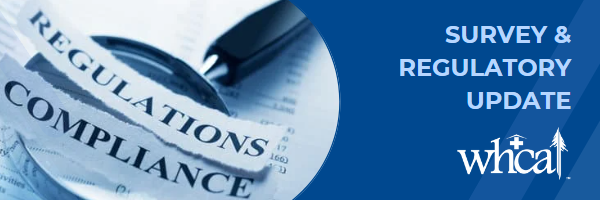Nov 15 2023 | E-Tags and Emergency Preparedness
In September 2016, CMS published the Emergency Preparedness final rule which established consistent emergency preparedness requirements for health care providers participating in Medicare and Medicaid. These requirements then went into effect in November of 2017. Skilled nursing facilities are only one of the 17 health care settings, included in these rules which are not limited to hospitals, ambulatory surgical centers, hospices, psychiatric residential treatment facilities, home health agencies, and community mental health centers. CMS’s intent even prior to the COVID-19 pandemic was to increase patient/resident safety during emergencies and to establish a more coordinated response to natural and man-made disasters.
It is important now as we continue to transition out of “pandemic” mode to review and ensure facility compliance with these rules. The Emergency Preparedness Rule can be found here. Facilities should download the document, read it, and disperse it to the appropriate individuals in each of your facilities. However, fair warning, it is not short or quick reading, so here is an overview.
There are four overall provisions required of each facility’s Emergency Preparedness Program.
1. Risk Assessment and Planning
a. Each facility must develop an emergency plan based on a risk (flood, tornadoes, windstorm, fire, etc.) assessment.
b. Each facility must perform a risk assessment using an “all-hazards” approach, focusing on the capacities and capabilities of each facility.
c. The facility must update the emergency plan at least annually.
What is an “all-hazards” approach? An all-hazards approach is defined by CMS as an integrated approach to emergency preparedness planning that focuses on capacities and capabilities that are critical to preparedness for a full spectrum of emergencies or disasters, including internal emergencies and a man-made emergency (or both) or natural disaster. This approach is specific to the location of each facility and should consider the specific type of hazards most likely to occur in each individual area. Examples can include such things as equipment and power failures, care-related emergencies, and interruptions in communications, water/food supplies, and cyber-attacks. Each facility should start by looking at their specific geographic area/location.
2. Policies and Procedures
a. Every facility must develop and implement policies and procedures based on the emergency plan and risk assessment.
b. Policies and procedures must address a range of issues that could affect the facility, including the need for food, water, shelter, medications, evacuation plans, and means of tracking residents and staff.
c. The facility must review and update these policies and procedures annually.
3. Communication Plan
a. Facilities must develop a communication plan that complies with both Federal and State requirements.
b. Each facility must have a plan to coordinate resident care within the facility, across health care providers, and with state and local public health departments and emergency management systems.
c. This plan must be reviewed and updated annually.
4. Training and Testing Program
a. Each facility must develop and maintain training and testing programs for all personnel, including initial training in policies and procedures.
b. The facility and staff must demonstrate knowledge of emergency procedures and provide training at least annually.
c. The facility MUST conduct drills and exercises to test the emergency plan.
Additional requirements vary per provider type. For example, long term care facilities must share information from the emergency plan with residents and family members/representatives. Facilities are expected to meet all training and testing requirements. These include but are not limited to the following:
- All of the staff training requirements.
- Participation in a full-scale exercise that is community-based or when a community-based exercise is not accessible, an individual, facility-based exercise.
- Conduct an additional exercise that may include, but is not limited to the following:
- A second full-scale exercise that is individual, facility based.
- A tabletop exercise that includes a group discussion led by a facilitator, using a narrated, clinically relevant emergency scenario, and a set of problem statements, directed messages, or prepared questions designed to challenge an emergency plan.
CMS uses the following training and testing program definitions:
- Facility-Based: CMS considers the term to mean that the emergency preparedness program is specific to the facility. Facility-based includes, but is not limited to, hazards specific to a facility based on the geographic location, resident population, facility type, and potential surround community assets.
- Full-Scale Exercise: Is a multi-agency, multi-jurisdictional, multi-discipline exercise involving functional and/or “boots on the ground” response (for example firefighters decontaminating mock victims).
- · Table-Top Exercise: Is a group discussion as defined above and involves key personnel discussing simulated scenarios in an informal setting. A table-top exercise can be used to assess plans, policies, and procedures.
Please review the requirements for additional information to ensure compliance and exemption criteria. The CMS website is a resource for assistance in developing and implementing your emergency preparedness plans.
If you have questions, please call Elena Madrid at (800) 562-6170, extension 105, or email.
Posted in Skilled Nursing Facilities, Survey & Regulatory

